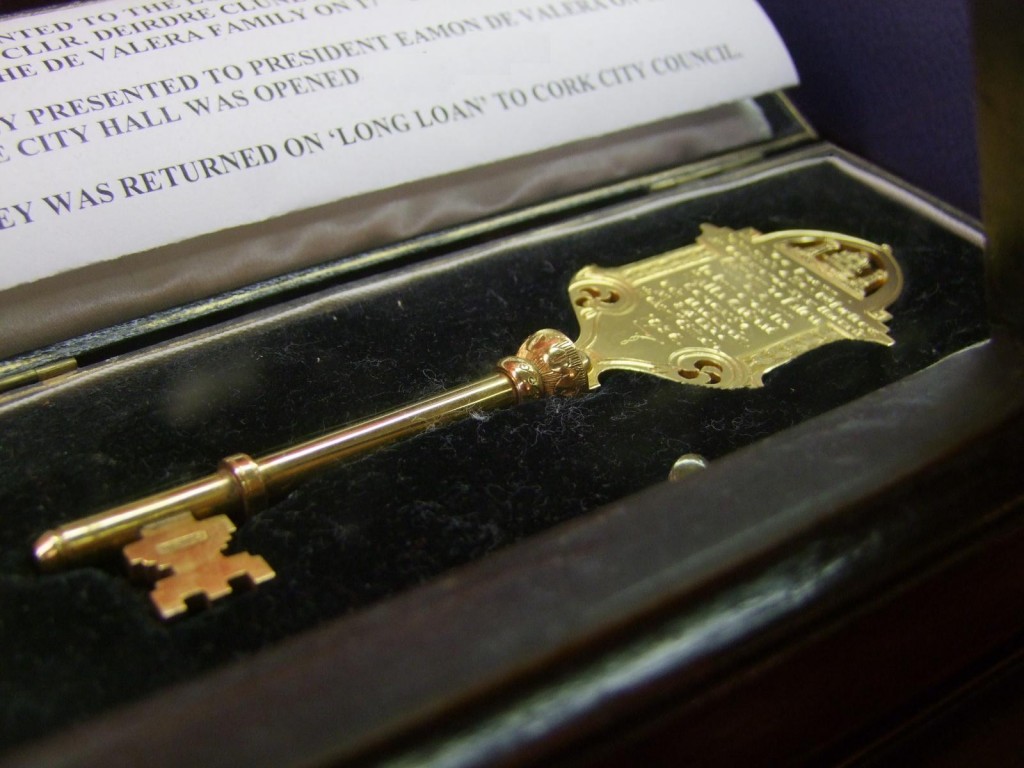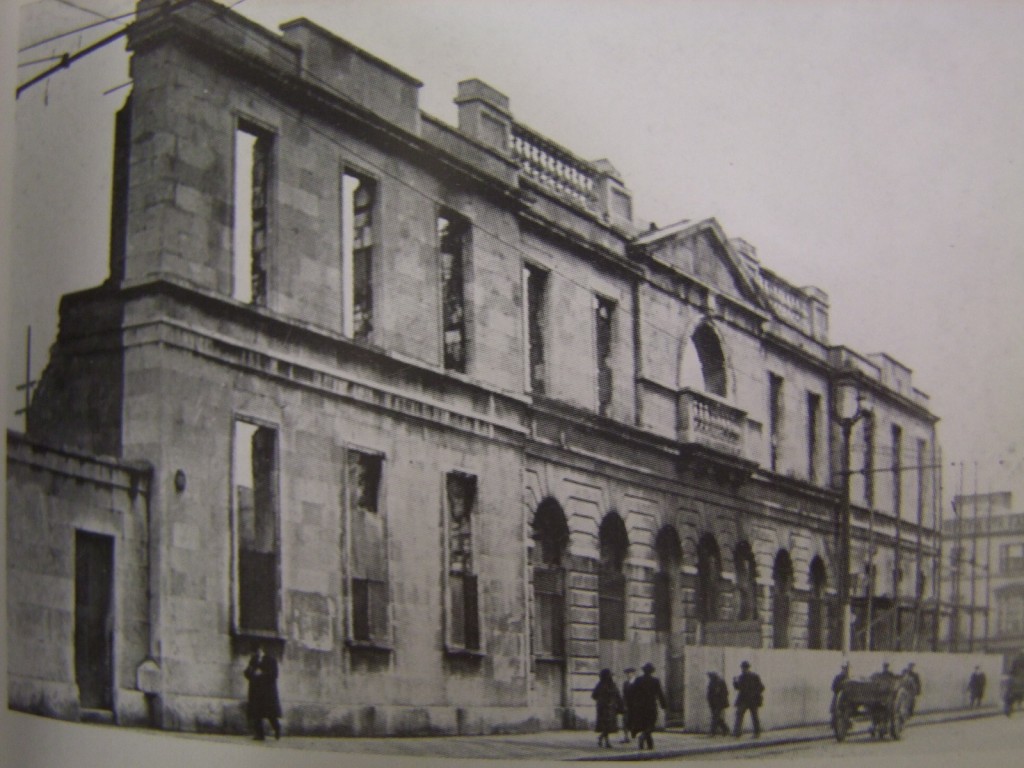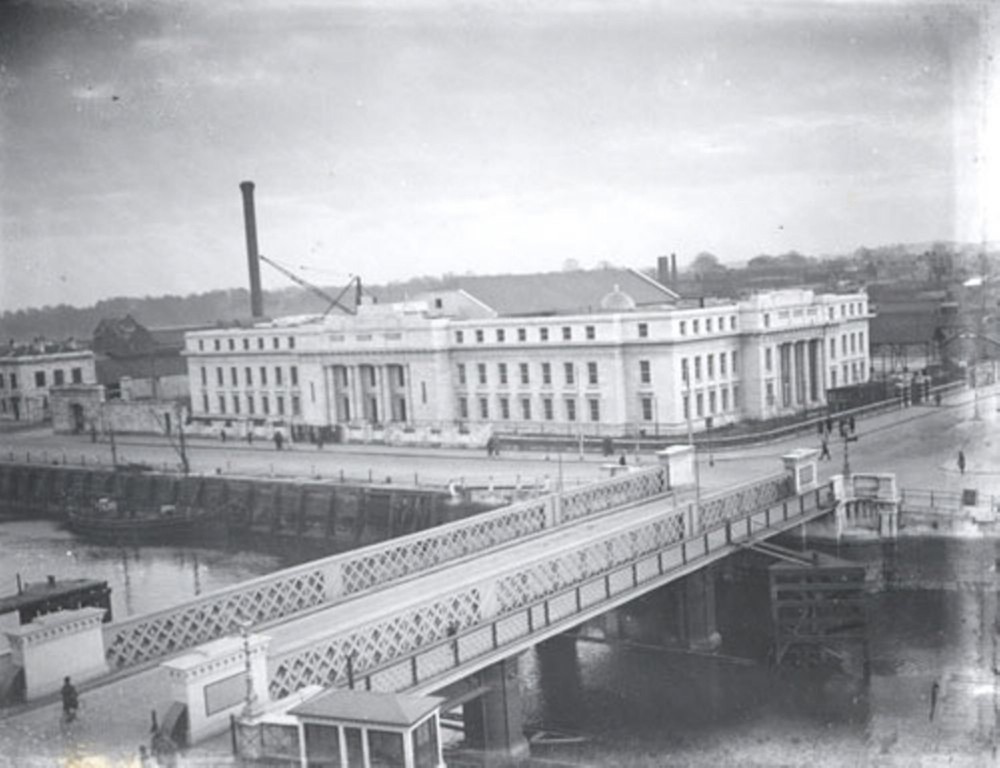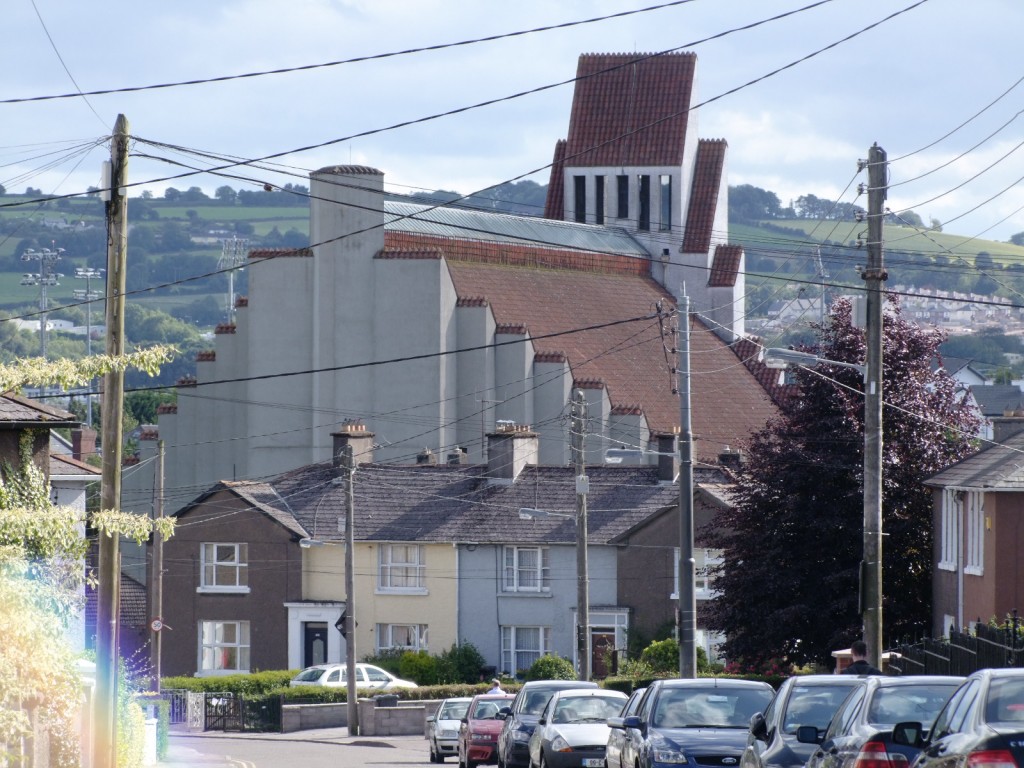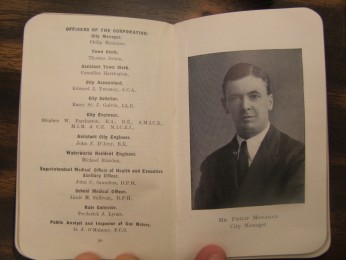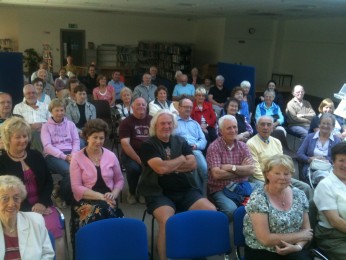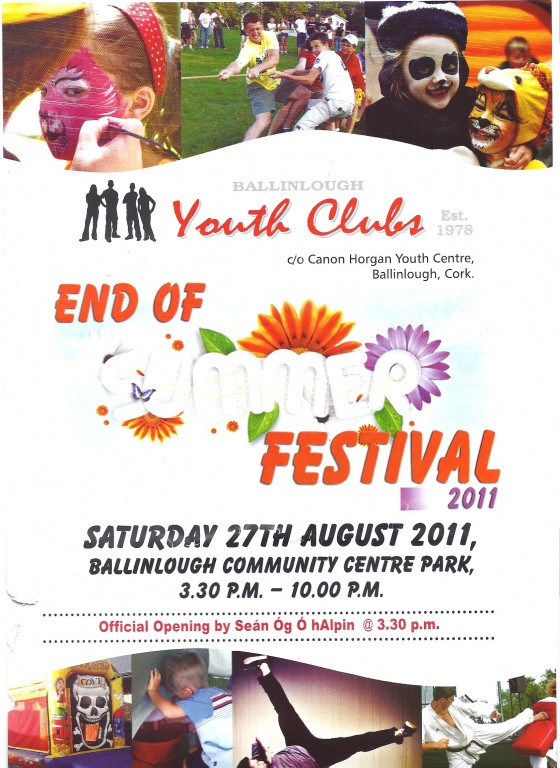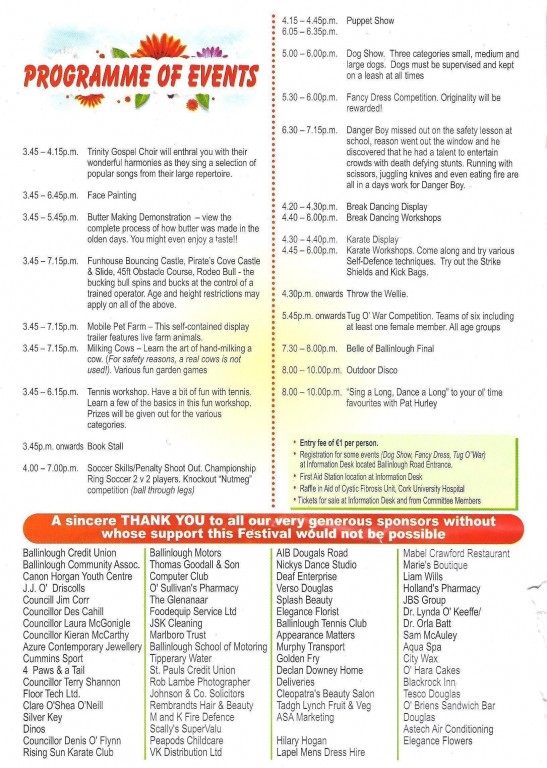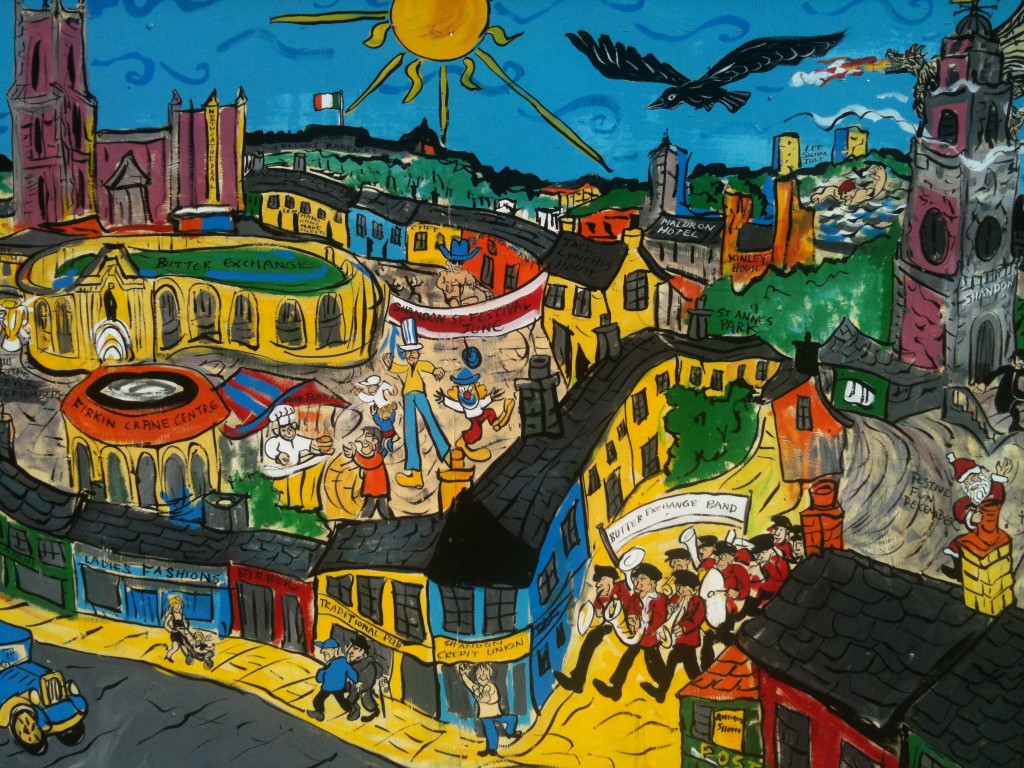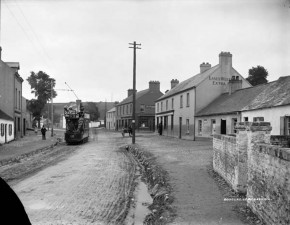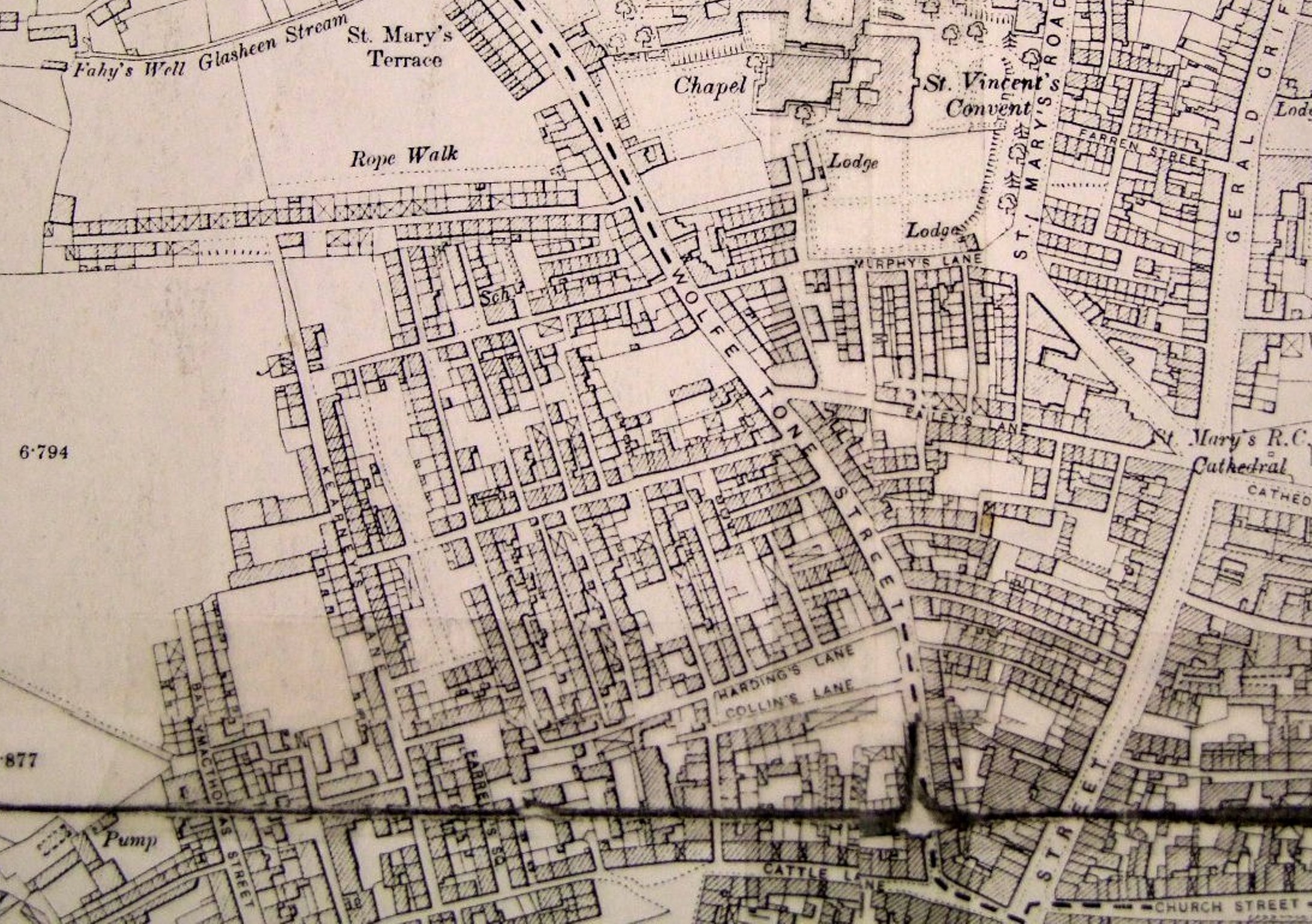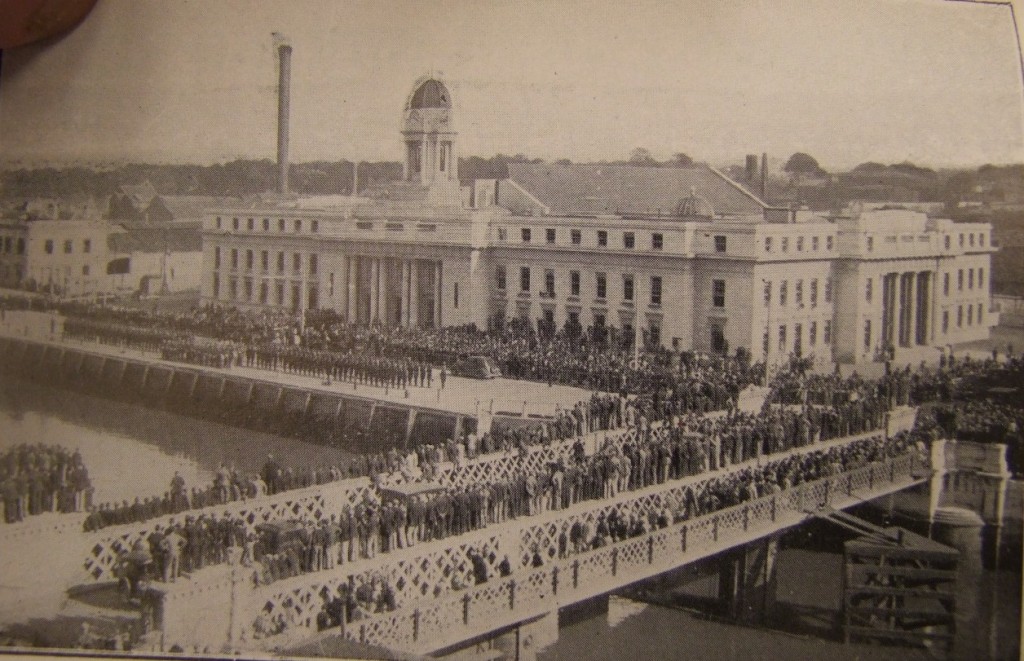
Kieran’s Our City, Our Town Article,
Cork Independent, 8 September 2011
Building a City Hall
“In the rebuilding of Cork City Hall of Cork, they turned to that other road, to the road of building up, not undoing, but doing, from failure to success, from hopelessness to hope. That day they threw out again from the outer walls the banners of cultural progress, civic ambition and national hope” (Hugo Flinn, T.D. at the luncheon prior to the opening of Cork City Hall, 8 September 1936, 75 years ago today).
Ten months after the laying of the foundation stone of Cork City Hall in April 1933, contractors for the erection of the new buildings received directions to go ahead with the work. About three-fifths of the contract, which was to amount to £150,000 had not yet begun. That being said in the same month, Cork Corporation decided to place a crucifix in the Council Chamber of the new building. The decision was taken following a request conveyed in a letter from the Hon. Secretary of An Rioghacht. The group were also known as The League of the Kingship of Christ and had been established in Dublin in 1926 and sought to spread more widely Catholic social principles. Alderman Horgan noted at the Council meeting said that they were tolerant of the view of everyone and that an overwhelming majority in Cork were Catholics. He noted that the crucifix was an emblem of Christianity and should be in the new council chamber.
On 1 February 1935, various municipal departments, housed at Fitzgerald’s Park since 1920, were transferred to the new building. The part of the building ready was the western wing and contained offices, the council chamber and committee rooms. On the 23 April 1935, the Council met for their first meeting in the new chamber. A telegram from Alderman Byrne, T.D., Lord Mayor of Dublin, wished health and prosperity to Cork and its people. Admission to the council chamber public gallery was by ticket. The Irish Independent noted of the building at that stage:
“The Hall, which replaces the structure destroyed by British forces has been designed to harmonise with Georgian period of architecture and native limestone has been largely used in its construction…the entrance to the offices now completed is through a marble-paved vestibule. The main staircase has marble steps with ornamental balustrades. The Council Chamber is lofty and well lighted, with galleries for the public and important visitors. The suite of rooms for the Lord Mayor is commodious and beautifully fitted. Irish materials have been used as much as possible…local workmanship has been used as far as possible throughout the reconstruction, and the building has provided much needed employment in a number of Cork trades.”
In late June 1935, the Old I.R.A. Men’s Association wrote that suitable memorials should be erected in the new City Hall to the memories of the late Lord Mayors Tomás MacCurtain and Terence MacSwiney. Alderman Allen noted that he had brought the matter up previously and had asked for the placing of a bust of Tomás MacCurtain in the council chamber. The Lord Mayor said the Corporation had decided that suitable memorials would be erected to the memory of both Lord Mayors once City Hall was near completion and installation would be possible. The Lord Mayor further noted that “the matter was not been lost sight of, it would not be desirable at the moment to rush the question of having busts executed, as these might not meet the requirements of the Council or of the citizens”.
On 8 September 1936, the fateful day of the official opening of City Hall arrived. President of the Executive Council of Ireland Eamonn DeValera, accompanied by the Minister for Defence, Frank Aiken were met at the Borough boundary at Tivoli at 12.45 by the Lord Mayor, Ald. Seán French and city councillors, J.C. Rohan, Chairman of the Harbour Commissioners, Colonel McCabe, O/C. Collins Barracks, Cork and Chief Superintendent Hannigan of the Garda Síochána. The party then drove to the city in open carriages and on their arrival at the Victoria Hotel, a luncheon was given before the opening ceremony. Eamonn DeValera was received by a military guard of honour and the national anthem was played. The official opening time was set for 4pm. In the new assembly hall of City Hall there were seated 2,000 people. Admission was by ticket as the number of applicants for admission would have filled the place three times over. Four Mayors of Boroughs in the Irish Free State (Clonmel, Limerick, Waterford and Drogheda), Church dignitaries, deputies and representatives of various walks of life in the City were present.
The Cork Examiner recorded that every vantage point was filled around City Hall. When the President proceeded to the main door of the building and opened the main door of the building with a gold key (made from Messrs. Egan and Sons) there were fully 20,000 people watching the event. A fanfare of trumpets was given by trumpeters of the band and the tri-colour was run up on the City Hall. A second later the air resounded to the booming of artillery as a salute of 17 big guns was given from the opposite quay by a detachment of artillery from Collins Barracks.
To be continued…
Captions:
607a. Opening of Cork City Hall, Tuesday, 8 September 1936 (picture: Cork Corporation Diary, 1936)
607b. Gold key that opened Cork City Hall, now in Lord Mayor’s Chambers (picture: Kieran McCarthy)
